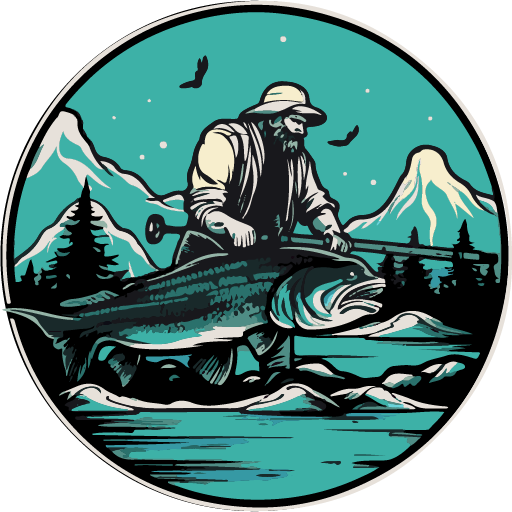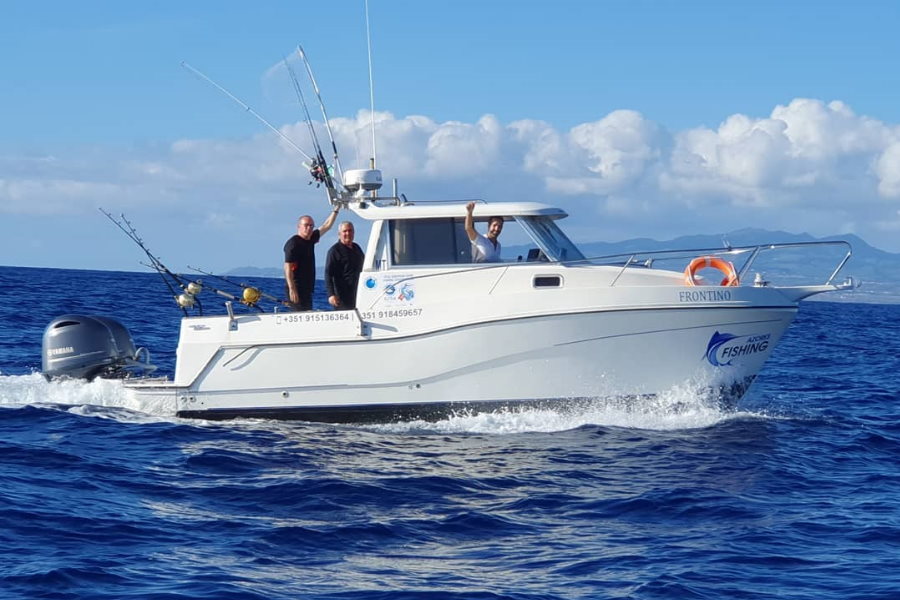All about Trolling Fishing
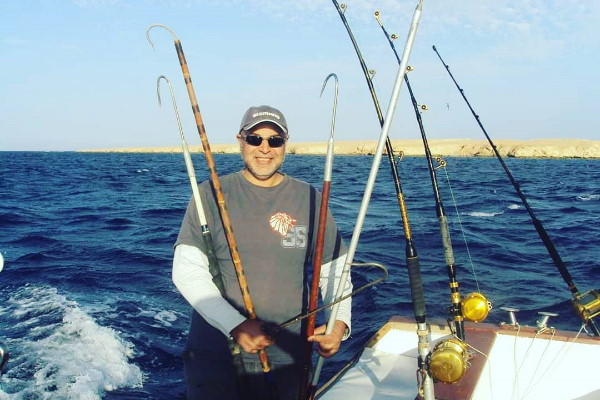
Fishing is one of the most popular outdoor activities. With so many bodies of water around the world, there are endless possibilities for places to fish and types of fish to be caught. Whether you’re a novice or an experienced angler, learning about trolling fishing can take your experience to the next level.
A great way for experienced and novice anglers alike to increase their catch, trolling is a method of fishing that involves propelling the boat slowly over an area with one or more lures at various depths to attract any kind of fish nearby.
Whether it’s freshwater or saltwater, recreational or competitive angling – trolling can be used as a highly effective tactic!
Fishing with lures has been found to increase success rates amongst anglers, giving them the chance of catching different species in various locations and seasons – improving overall enjoyment levels! So what exactly is trolling? Keep reading as we explain all there is known about this type of fishing technique!
What is Trolling Fishing?
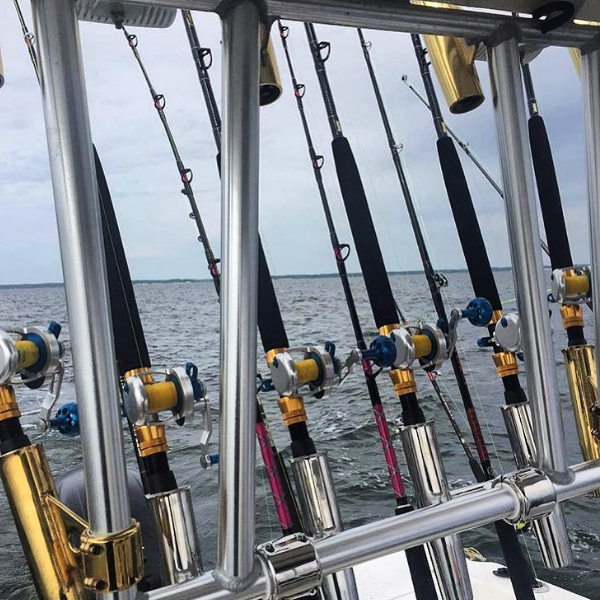
Trolling is a method of fishing where one or more baits are trailed behind a slowly moving boat. The motion of the boat causes the lure to move, mimicking the movement of a natural swimming prey.
This technique can be used in both freshwater and saltwater bodies and is an effective way to locate and catch fish in open water. This type of angling works best when performed with lures that are designed for trolling, as these types typically have tails that help create vibrations underwater – making them easier for passing fish to detect.
Trolling allows anglers to cover larger areas quickly than other methods, meaning they can target multiple species with minimum effort! It also provides more control over bait presentation, as different depths and speeds can be used to attract different species.
Where Can You Troll?
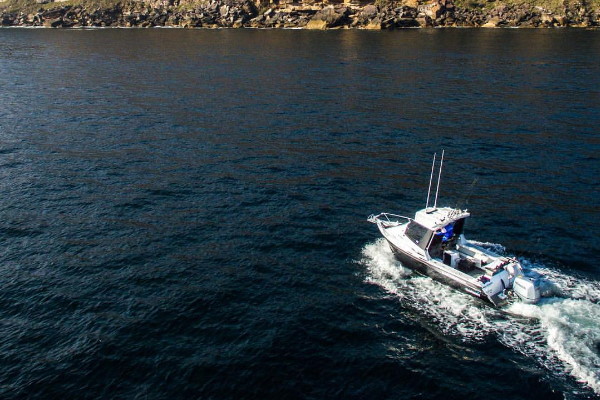
Trolling offers a great deal of freedom and adaptability and can be done in both saltwater and freshwater bodies of water. It is a great technique to use when fishing off the coast, around islands, or in deep lakes. Trolling is also a popular method for targeting migratory fish such as salmon and trout.
To make sure you are fishing in the best spot possible, two key factors should be considered: getting close enough for a catch-of-the-day and hitting the perfect depth with your specialized equipment. Begin by using sonar or tracking birds skimming the surface of waters in search of baitfish schools or try finding floating weed lines that draw fish near.
Finally, hitting ideal depths through equipment like downriggers and planer boards. These aids make reaching optimal angles hassle-free while also being capable of drawing out bigger catches from deeper waters.
What Common Catches When Trolling Fishing?
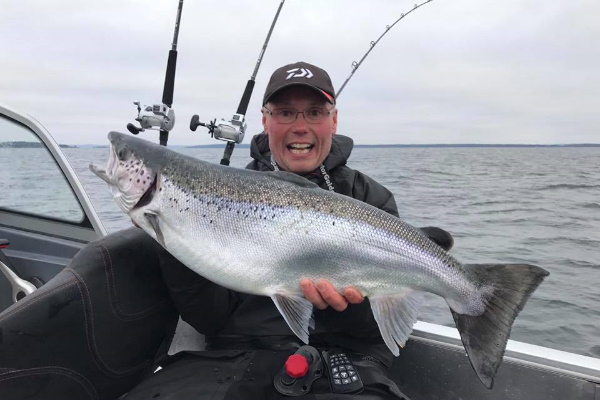
Trolling is an effective way to target a variety of fish species. For destination anglers seeking a variety of prime catches, the allure of trolling is hard to beat. Freshwater provides opportunities for Salmon and Trout species as well as Bass and Walleye while saltwater offers nearshore Kingfish, Wahoo, and Barracuda.
Offshore fishing opens up even more possibilities with exciting big game fish such as Mahi-Mahi, Tuna Sailfish, or Marlin calling out your name – no wonder so many bucket list memories have been made at sea!
When it comes to trolling for big-game fish like marlin or tuna, you’ll want to make sure you have the right lure for the job. Lures that create loud vibrations underwater are best used when targeting larger species as they draw more attention from greater distances.
For smaller catches such as trout or walleye, lighter lures with subtle movements can be used to entice them closer to your boat.
No matter what type of fishing you’re doing, trolling is a great way to increase your chances of catching something. With the right equipment and technique, you can have an enjoyable and successful fishing experience!
What Gear do You Need?
Trolling requires special equipment – from rods and reels to lures and baits. By being aware of the right way to go about trolling fishing – from having the proper equipment and selecting the best type of bait for certain species – anglers can maximize their chances of catching more fish!
Boat And Motor

When trolling, it’s important to have a boat and motor that are capable of providing consistent speed.
When embarking on your trolling journey, the type of boat you invest in can make all the difference. Choosing a boat that has strong rod holders and a powerful engine is essential.
Offshore fishing requires a powerful and reliable engine to ensure success; however, for freshwater bodies such as lagoons or lakes, it is best to opt for a smaller model powered by a trolling motor. Not only are these engines more discreet but also less noisy that their bigger counterparts – guaranteeing an optimal experience without scaring away fish!
Rods
When it comes to trolling, having the right rod is key for successful fishing in freshwater or offshore. The number of rods required can range from two up to six – with each one being mounted onto specific areas on the boat referred to as “gunwales”.
Anglers know that rod stiffness is an essential feature when trolling, as lures provide resistance while they’re pulled through the water. However, those heading out to sea require specialized gear for more successful fishing – a stiffer rod type than you’d use inland.
For inshore and freshwater angling, a stiff but reasonably standard-type rod will do fine whereas if you plan an ocean adventure more specialized gear may be necessary.
Heavier and stiffer rods in the 6 ½ to 7 ½ foot range are ideal when fishing for a hefty catch. Nearshore, a slightly lighter rod may do just fine, but if you’re venturing out after larger creatures, investing in specialized equipment will be worth your while.
These rods boast line guides with rollers that minimize friction so anglers can manage large catches more effectively; there are two popular varieties – roller or turbo guides – both of which have their benefits: whilst roller models better handle bigger fish fighting against them on the other end of the hook, turbo designs prove much easier to wield due to their lightweight construction.
Reels
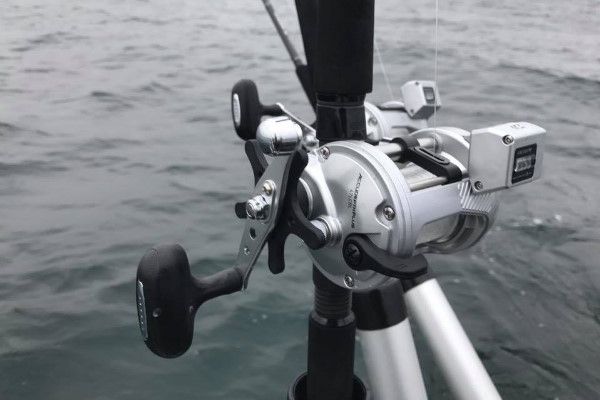
Anglers have endless debates over which type of trolling reel is best, with options ranging from simple spinning or conventional reels to sophisticated line-counting designs.
When choosing the right trolling reel for your fishing needs, there are a variety of factors to consider. Conventional reels offer large amounts of lines and better control when trolling, making them popular choices among anglers.
However, line-counting reels can take precision up a notch with their ability to replicate presentations time over time. With such variations as electric ones featuring LCD screens now available on the market – though some would argue this might be too much tech – fishers have more options than ever before in optimizing their gear setups.
When fishing for species such as Tuna, two-speed reels can be a real game changer. With the simple click of a button, it is possible to switch to an increased speed which will give you that crucial edge when trying to keep up with fast fish. Additionally, they also offer more power and torque needed in those marathon battles against impressive fish catches!
Baitcaster running reels are much like their baitcasting counterparts but come even better equipped; many feature line measuring functions so anglers have greater control over every moment!
Experienced anglers understand the importance of having specialized equipment when trolling for large predators, such as tuna and salmon. Bait runners are often used to help get the job done more efficiently; however, baitcasting reels can be just as effective – if you’re not looking for fish above average size.
For battling giants like Tuna an upgrade to a two-speed reel is highly recommended due to its invaluable line-gulping speed switch which increases power while reeling in monsters that try to run away at full throttle!
For the angler starting, it’s important to buy equipment that won’t break the bank but will still get you on a fish. Making sure it contains a ‘clicker’ will provide the sound that all anglers look forward to when a nibble has been taken! Missing this heart-jolting noise could mean missing out on that dream catch.
Line

No matter if you’re looking to troll inshore or offshore, having the right line is essential. For most inshore trolling situations, a great choice would be a long and strong fishing line that doesn’t break the bank.
Outriggers
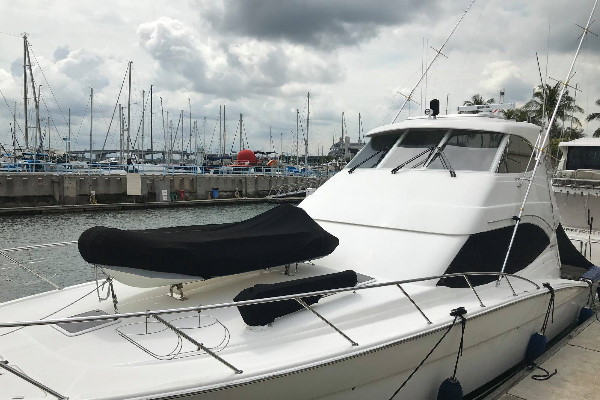
When it comes to more intense ocean conditions such as high-speed trolling for large predators though, monofilament lines are often favored due to their reliable stretch capacity which helps absorb shock from heavy catches!
Braided lines are also the perfect tool to strengthen your fishing technique and take it to greater depths. With a much smaller diameter than monofilaments, they allow you to cast bait with precision from longer distances – making them ideal for casting at deeper waters!
Outriggers are an essential component for any offshore angler’s boat. These long poles, mounted along the sides of a vessel, provide not just line-holding support but also many other advantages – making them invaluable to anyone looking to reel in that big catch!
Outriggers are a must-have for serious offshore anglers, allowing them to take their trolling game up several notches. By placing outriggers on the sides of your boat, you can increase the number of lines in the water and spread these lines far apart to prevent tangles – presenting bait perfectly away from any engine spray or disruption.
When strikes occur on these strategically placed lines, clips release them to be battled by rod and reel! Although necessary when it comes to deep sea fishing tactics like this one, they’re usually unnecessary with inshore/freshwater goals – single rod trolling included.
Downriggers
Downriggers are a great way to maximize your success out on the water. Not only can they spread bait across wider depths of fishing grounds, but their heavy weights and specialized lines also help you fish further underwater than ever before.
When fish bite, a clip detaches so fishermen can get up close with their catch. Of course, downrigger systems do come at a cost; however, in return, these efficient tools offer anglers reliable performance each outing.
Planer Boards
Planer boards provide an economical alternative to downriggers for those looking to spread out and lower trolling baits. These small devices use a fishing line that runs downward beneath them as they float on the water’s surface. These buoyant devices can be used in multiples – two to six or more at a time – so you’ll have the best chance of attaining success!
Not only do they give your bait greater exposure over wider-reaching areas; but should one board lag behind its colleagues it could mean that it’s onto something big and ready for battle.
Not only can they be used to locate and target schools of fish, but by attaching the line to an ingenious spring-loaded flag system anglers will know almost instantaneously when their bait has gotten some attention!
The adjustable sensitivity ensures that all kinds of catches (and currents) can set off the alert – making it easier than ever before for fishermen everywhere to gauge success rate with total accuracy.
Baits and Lures for Trolling
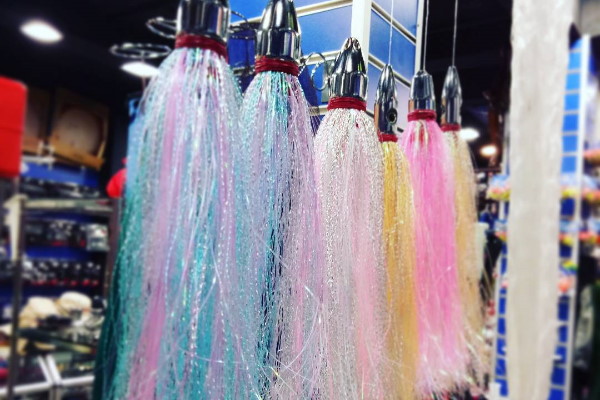
Choosing the right tackle for successful fishing is essential. In shallow waters, lures offer a great tool to precisely replicate educational depths and imitate living fish – perfect to catch bigger predators’ attention.
To maximize results depending on your goal game, skirted lures are suggested when hunting larger species while soft plastics work best if you’re trolling after smaller prey varieties like spoons or plugs which can be used as universal alternatives in-between sizes.
On the freshwater end, spoons, soft plastic baits, or crankbaits are popular among walleye, bass, and trout anglers.
If you’re looking to target pelagic species in the ocean try squid jigs as well as ballyhoo mullet and mackerel – a great way to tackle multiple fishes such as Barracuda or Mahi Mahi up until Wahoo & tuna!
Experienced offshore fishermen utilize an effective two-pronged strategy when trolling for big games. To start, they use cut bait to entice their targets to close; the addition of a brightly colored skirted lure is thought to draw predators in from far away.
Once these sea creatures are near enough that they can sense the scent of the cut bait, it’s no longer a question of if but rather when one will be caught!
Tips for Trolling Fishing
It’s important to consider the water conditions when trolling for predator fish. You’ll need to adjust your boat speed depending on whether you’re moving up or downstream, as this will affect how natural a lure/bait appears while it’s in motion. Ensure that predators recognize what they are chasing and increase your chances of success.
Take a close look at any lures or baits being used – if they’re spinning out of control it means you’ve gone too fast, dial back the RPMs until its movement resembles real prey swimming along naturally. When done correctly, these lures will appear natural in motion which is key for attracting prey-seeking predators.
Switch it Up
For anglers new to the sport, a common mistake is assuming that maintaining one speed in a single direction will yield successful trolling results. Though frequently this will produce the occasional bite, it’s not an effective way of imitating how fish move in nature.
But consider this – fish do not move along like robots! To mix things up and create more success while fishing, why not vary your tactics? When you switch directions, it has the effect of spreading out your bait; some near surface level with increased speed on either side of the boat.
You’ll create more variety concerning depth, speed, and realism if you do so – plus your bait spreads out as well when making sharper turns! If you want rich rewards when trolling for fish then remember: changing course can make all the difference!
To optimize trolling around the structure, a lower-riding lure on the outer rig will counter any upward motion and keep your bait at an even depth—giving you the maximum chance of success. Counteracting the upward pull of bait by placing a lower riding lure nearby can increase your odds–tricking even warier quarry into taking!
Trolling Speed
Saltwater fishermen have plenty of fish to choose from, and trolling speeds vary depending on the target. If you’re looking for Marlin or other Billfish, 7-9 knots will work well – Wahoo often requires a faster 10-12 knot troll; while Tuna can be caught at 4-6 knots (depending on species).
When going after walleye, it pays to move between 2-3.5 mph; for bass, 4mph works great; whereas when pursuing trout a bit slower speed like 1.5 -2 .5mph will do the job nicely! In saltwater environments, blue marlin typically bites at around 8 knots–through small adjustments can always be made depending on individual preferences and conditions!
Bait Presentation
When trolling, it is important to take into account several factors that will influence your speed.
Running live bait requires slower speeds so it can move naturally.
Additionally, rougher seas may require further distance between baits and reduce your boat’s speed.
Too much white water created by outboard motors decreases visibility and disrupts the movements of lures or other activities used while fishing. Rev up the engine, but be mindful of its wake – keep your lure away or even better, on the side to avoid disturbance. Inboard motors offer an advantage when reaching faster speeds since they generate less turbulence on the surface because wake size matters!
Freshwater trolling is best accompanied by a rod flick now and then; making sure your bait’s movement looks as authentic as possible no matter if you’re in calm lakes or seas. This will make fishing look more natural for fish trying to prey on passing baitfish!
Presenting it crosscurrent gives fish more time to take notice for maximum catch potential! When going up and down currents consider presenting it crosscurrent; not only can multiple unsuspecting fish intersect its path but also keep them engaged longer as they follow their dinner’s erratic movement.
Line Placement
To be an effective angler, it pays to diversify the lengths and depths of your fishing lines. Keep some closer in while allowing others to reach further out for a more natural presentation – and if you’re using five or more lines, don’t underestimate the impact of varying their depths too! Going deeper or shallower than what’s expected can help increase success rates when utilizing 5 or more lines! This creates a more natural look and covers a wider area for greater chances of finding fish.
Weather Condition
Fishing with trolling is best done when the sun rises and sets, or under cloudy conditions during warmer times of the year. However, always be sure to check weather forecasts in advance; it’s never worth risking your safety by venturing onto open water just before inclement conditions arrive.
FAQs
Is Trolling Fishing Legal or Illegal?
The legality of trolling can be a complex issue, as it naturally depends on your chosen fishing spot and the regulations in place. Trolling is not allowed at certain venues due to boat traffic restrictions however if boats are permitted you could require specific motorized equipment depending on the location. Be sure to research local rules before setting sail!
With the right boat and gear, you can go trolling to find those swimming treasures. Before embarking on your journey, make sure that you have checked what kind of motor your boat requires as well as any baits/lures or hooks allowed in specific places. However, each location has its own rules and regulations regarding baits/lures allowed on boats while fishing as well as what kinds of fish are in season. Though it may seem like a daunting task to understand these laws, they exist to help promote healthy fish populations for future generations—and ensure all anglers have an opportunity for safe and enjoyable recreational activity.
It’s crucial for anglers traveling abroad to explore local regulations and see if a fishing license or insurance is required – as these laws are liable to change at any time. No matter your destination, ensure you have up-to-date information so that your experience on the water goes smoothly!
How Long Line Should You Let Out When Trolling?
While nobody has an exact answer for what line length works best, there are a few general tips to try. To help determine how many lines to use, consider the depth and type of lure you are using—shallow-diving lures will require shorter lengths than deep-diving lures.
If freshwater trolling for walleye using crank baits and aiming at 7ft deep fish, you should release roughly 100ft of line from your boat. To reach shallower depths with the same lure type, shorten that distance; if deeper is desired switch lures designed specifically to go those depths instead.
Familiarizing yourself with various types and sizes of lures can aid in making an informed decision about what lines work best!
If you want to reach the desired depth for your lure, weighing it down is a great way to do so. However, with unpredictable conditions like current and wind speeds being involved in offshore trolling, there’s an extra layer of complexity when trying to calculate how deep your bait will get. To give yourself a rough estimate as starting point though – if using a 50lbs line or lighter at 5mph speed and releasing around 50ft of line weighted by 5-pound weights – then expect that lures should typically be about five feet beneath the surface level on ideal days!
What is the Difference Between Trolling and Trawling?
While trolling and trawling are often confused, both of them involve a moving boat, and these two distinct fishing methods differ in many ways (in both execution and use).
Trolling is used for sport or recreational purposes using lines, rods, and reels to drag bait/lures through the water. Trolling is when an angler drags a bait or lure through the water with their fishing line, rod, and reel while traveling at speed on a boat.
Whereas trawling involves deploying nets pulled behind boats to capture large numbers of fish for commercial purposes. Anglers should be aware that these two terms are not interchangeable as each requires distinct methods of application which yield different results.
Can you troll with a spinning reel?
Yes, you can troll with a spinning reel! Many anglers prefer to use spinning reels for trolling due to their simple design and ease of use. Spinning reels also offer more control over the amount of line released—making it easy to adjust your depth as needed when trolling.
When using a spinning reel while trolling, it’s important to keep in mind that they are not designed for long distances or high speeds – so be sure to watch your speed and distance traveled accordingly. Additionally, with the lightweight design of some spinning reels, they may require extra weight added on (such as lead weights) to achieve desired depths.
Can you troll with a floating line?
Yes, you can troll with a floating line. Floating lines are designed to remain on the surface of the water and are often used when fishing from a stationary position or trolling slowly at low speeds. When trolling with a floating line, it’s important to keep in mind that this type of line is not as effective as sinking lines for reaching deeper depths and will be more easily visible in open waters – making them less desirable for stealthy approaches. Additionally, certain types of lures (such as weighted jigs) may be better suited for faster trolling conditions which require heavier lines like sinkers or braided ones.
When using a floating line while trolling make sure to adjust the speed and distance traveled accordingly so that your bait/lure remains suspended at the desired depth. Additionally, if fish are not biting at the surface it may be helpful to try using a sinking line to get deeper and increase chances of success! Finally, keep an eye out for any underwater structure that could potentially snag your lines – such as rocks or plants – and adjust your trolling path accordingly. With some practice, you can become an expert troll fisherman in no time!
Does line color matter troll?
Fishing with brightly-colored lines such as neon green, blue or yellow is an excellent way to ensure that you can track your line in areas where visibility might be diminished. In addition, the highly visible nature of this type of fishing line gives anglers greater control – allowing them to set baits at precise distances and spot any potential tangles before they occur.
Can you troll with a bobber?
Slip bobbers offer a strategic advantage for still fishing and slow trolling, but the faster-trolling technique requires an alternative approach, they simply don’t hold up to the faster-trolling pace required of some anglers. For these fishermen looking for a successful day out on the water, alternative rigging solutions may be necessary.
Can you troll with a 2 stroke?
With the right maintenance and attention to detail, you can use a powerful two-stroke engine for trolling. However, oil type and spark plug selection are key as it affects coking levels in your motor which could cause fouling of plugs. Also, using an auxiliary kicker would give better speed control when fishing with multiple baits – something four-stroke motors might not offer due to their no-fume emission capabilities.
Can you troll without a trolling motor?
Yes, experience the thrill of fishing without having a trolling motor! Explore shorelines, mangroves, and channels for trout, ladyfish, jacks bluefish, and mackerel. With some luck on your side, you can easily find a hotspot to anchor up or drift – great fun even in low-speed conditions.
Conclusion
Now that you know more about trolling fishing, why not give it a try on your next fishing trip? With the right gear and preparation, you can be sure to have a fun and successful experience while enjoying the peacefulness of being out on the open water.
After all, there’s no better way to learn than by experiencing it firsthand. So grab your gear and head out to the open water!
Thanks for reading our article. If you have any questions, leave a comment below. You can see more posts on our website here.
Further reading:
